
Sigma has been bringing their prestigious “Art” line to Sony mirrorless for some time now, however, one of the most popular full-frame lenses was missing. That is, until the Sigma 24-70mm f/2.8 DG DN Art was announced over a year ago. Of course, it took over a year for us to get enough time with this lens, thanks to the extenuating circumstances of 2020, but without a doubt, we have now fully realized this lens’s performance and potential.
In short, this is an awesome, high-performance flagship piece of glass. The bar has been raised high enough that I find myself flat-out recommending this Sigma Art lens, for just $1,100, instead of Sony’s own 24-70mm f/2.8 GM, a lens costing exactly double the price, at $2,200. Across the board, period. Get this Sigma!
It really is that good. I might even use the word “flawless” once or twice in this review, I’m not sure yet. It has literally everything going for it, from being smaller and lighter than its DSLR predecessor to being flawlessly sharp. (One!) It is also built like a tank, and just about the only thing missing is optical stabilization, a feature that only Canon’s full-frame mirrorless 24-70mm f/2.8 has, (in conjunction with their sensor-based stabilization, too!) …while on Sony’s GM flagship 24-70, you are restricted to IBIS.
The bottom line is, we’ve got another winner on our hands, folks!
Oh, by the way, there’s one twist: This particular copy of the lens we’re reviewing is a Leica L-mount lens, reviewed on the Sigma FP and the Panasonic S1; it is NOT a Sony E-mount version, so I’ll be comparing it to not just the Sony GM competitor, but more so the Panasonic 24-70mm f/2.8, which bears a prestigious Leica badge. Spoiler alert: The Sigma holds its own, in every regard, and since that Lumix lens also costs ~$2,200, we’re going to reach the same verdict: buy the Sigma!
Sigma 24-70mm f/2.8 DG DN Art Specifications

- FOCAL LENGHT & ANGLE OF VIEW: 24-70mm, 84.1° to 34.3°
- LENS MOUNT(S): Sony E, Leica L (Panasonic & Sigma)
- APERTURE & RANGE: f/2.8 to f/22, rounded 11-blade
- STABILIZATION: No
- AUTOFOCUS: Stepping motor (virtually silent)
- MANUAL FOCUS: Electronically controlled
- OPTICAL CONSTRUCTION: 19 elements in 15 groups, 6 FLD, 2 SLD, 3 Asph
- MECHANICAL CONSTRUCTION: Metal mount & barrel, fully weather-sealed
- MAGNIFICATION & FOCUS DISTANCE: 0.34x (7.09 in. / 18 cm)
- FILTER THREADS & HOOD: 82mm, click-lock hood w/ rubber grip
- SIZE: 3.46 x 4.84 in. (87.8 x 122.9 mm)
- WEIGHT: 1.84 lb (835 g)
- PRICE: $1,099 (B&H)
Sigma 24-70mm f/2.8 DG DN Art Review | Who Should Buy It?


A 24-70mm f/2.8 lens is a must-have for many types of photographers. If you own a full-frame camera, then you’ve undoubtedly at least strongly considered a 24-70mm f/2.8 at least once or twice, if you don’t already own one.
Casual hobbyists buy them, even though they’re usually massive, hefty beasts to be lugged around all day on your family outings or random walkabouts or tourism.
Serious professionals rely heavily on this mid-range constant f/2.8 zoom, of course, for virtually everything from portraits and weddings to commercial work and real-estate photography. Simply put, it’s a versatile lens that could be responsible for the bulk of what you do.
So, in this “who should buy it?” section, we’re not going to focus too much on the WHO; instead, we’re going to talk about why you might consider this lens either compared to its competition or compared to alternatives such as prime lenses.
(NOTE: Thanks to the extraordinary circumstances of 2020, I was unable to bring the mirrorless Sigma 24-70 2.8 to a wedding or portrait session. However, the general advice given below is based on 15+ years of experience as a wedding & portrait photographer, using literally every 24-70mm f/2.8 on the market in all manner of shooting conditions. STAY TUNED, for additional comparisons between this lens and others, in terms of things like low-light autofocus reliability on a wedding reception dance floor, hopefully coming later this year!)
Wedding Photography
Wedding photographers almost all fall into two categories: Those who absolutely love a good 24-70mm f/2.8, and those who loathe such a lens, and opt for primes instead. If you’ve ever photographed a wedding, then you might already know whether you love or hate this zoom range.
If you’re a photographer or videographer who does weddings on either Sony or Panasonic/Leica/Sigma full-frame bodies, this is hands-down the best choice for those of you who already know you like a 24-70mm f/2.8. Period!
If you have usually preferred primes for weddings, though, you have to ask yourself these questions now that this Sigma is on the playing field: first, did you “hate” 24-70mm f/2.8 lenses because they weren’t sharp at one end? Unlike the 24-70mm’s of yesteryear, this Sigma is razor-sharp at all focal lengths, even wide open at f/2.8. If you were a prime shooter who usually stopped down to f/2.8 for sharpness anyway, then you can put those primes away and get this Sigma zoom.
Also, if you previously hated 24-70mm’s because they were just big and heavy, you might also want to consider this new Sigma, because it is smaller, lighter, and better balanced, thanks to the shorter flange distance of mirrorless, plus an overall more compact design.
Oppositely, if you found yourself always turning to primes because you specifically wanted or needed to work at f/1.4 or so, then, of course, you may still choose to use a prime very often. However, in wedding photo/video work, sometimes you still need a good zoom for when the action gets just way too dynamic for a prime to handle. In the past, you might not have been able to own a native E-mount or L-mount 24-70mm f/2.8, due to the price tags that are well over $2K; maybe you “settled” for a bulky old DSLR lens on an annoying mirrorless adapter. Now, you can pick up the Sigma 24-70mm f/2.8 DG DN Art for half the price, and if your Canon 24-70mm f/2.8 L II or Nikon 24-70mm f/2.8 VR was in great condition, you might even come out ahead when selling those lenses on the used market!
Portrait Photography
For portrait photographers, all of the above discussion applies, with one caveat. You probably already know whether you prefer an f/2.8 zoom, or primes, for your mid-range portrait photography. You might love a 35mm, 50mm, or 85mm prime a lot more than you love 24-70mm, whether it’s for the faster aperture, or the weight savings and significantly lower wrist strain you get from using an f/1.8 prime instead of an f/2.8 zoom, or even an f/1.2 or f/1.4 prime.
The one caveat, of course, is that in portrait photography, you often have a lot more control over your subjects and shooting conditions, therefore, you might have even less of a need for a zoom lens, if you prefer primes.
Having said that, a lot of more versatile portrait photographers, especially if you do family portraits or any portraits involving active children, could probably still use a mid-range zoom because it allows them to quickly switch from capturing an official wide-angle group photo to snapping candid close-up moments of individuals or smaller groups.
Either way, whatever your style, if you’re looking for a 24-70mm f/2.8, this is the one to get.
Videography & Cinematography


As we’ve already said, a good 24-70mm f/2.8 is a workhorse lens for many different types of photography. So, that makes this lens even more exciting for one reason: Now you have a flagship-grade 24-70 2.8 for the Sigma FP, the only full-frame camera to shoot 4K RAW DNG video! (Doing your video “color grading” in Lightroom is a thing of beauty, folks! Stay tuned for our full Sigma FP review coming soon!)
Simply put, whether you use autofocus or manual focus, whether you’re using one of the video powerhouse full-frame cameras from Sigma, Panasonic, or Sony, …this lens could be an absolute must-have.
Editorial, Commercial, & Real Estate Photography
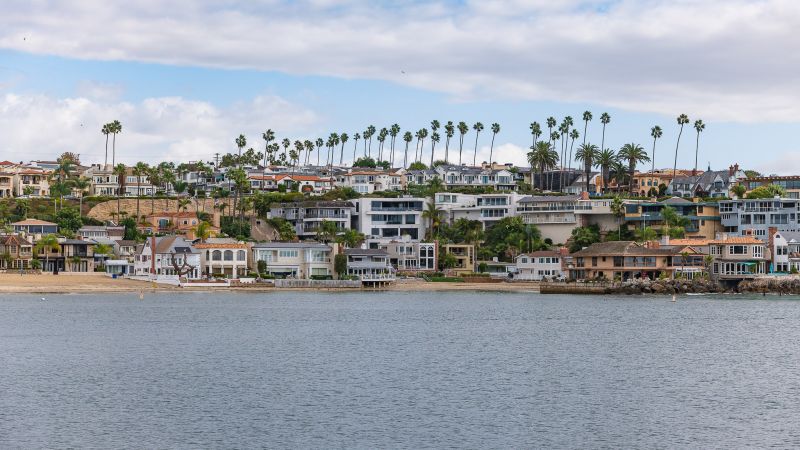
High-end portraiture, product photography, real estate…virtually all other types of professional photography can often depend heavily on a good 24-70mm f/2.8. Not only that, but they also probably care a lot more about the nuances of image quality, whereas a more “informal” portrait photographer might care most about things like autofocus reliability and bokeh, but not much else.
Whatever your profession, whatever your shooting style, if you need a 24-70mm f/2.8 workhorse, the Sigma 24-70mm f/2.8 DG DN is up to the task. It is wicked-sharp, all the other aspects of image quality are impressive, and just as importantly, the lens is built very sturdy, for years of reliability as a workhorse.
Candid, Everyday, & Street Photography

As a casual everyday lens, the Sigma 24-70mm f/2.8 may not be the most ultra-compact mid-range zoom around; that honor still goes to the Sony E-mount Tamron 28-75mm f/2.8 Di III RXD, at just 550g versus the Sigma’s 835g.
Having said that, even for “casual” walk-around photography, let alone travel/vacation, cityscape, …basically everything, there is a huge difference between 28mm and 24mm, indeed!
Considering that the Sigma and Tamron aren’t that far apart in price, ($880 versus $1,100) …if you don’t mind the weight of the Sigma, you should definitely choose it as your go-to everyday mid-range lens. Unless you want something totally different, of course, like the Tamron 28-200mm f/2.8-5.6.
Action Sports Photography
Action sports of any kind are, by their very definition, going to involve fast action that you’ll want to track with good autofocus. This is aided by a bright f/2.8 aperture compared to slower aperture lenses, of course, however, oftentimes third-party lenses aren’t as good as name-brand options, especially when they get optically robust and have to push a lot of glass back and forth.
Of course, before you buy a 24-70mm f/2.8 for action sports, you’ll probably want a good flagship 70-200mm f/2.8 first, like the Sigma 70-200mm f/2.8 DG OS HSM Sports, a $1,500 lens.
[Lens Review: Sigma 70-200mm f/2.8 DG OS HSM Sports]
Anyways, we weren’t able to use this Sigma 24-70mm f/2.8 DG DN on a flagship Sony like the Sony A9 II, or even a budget-friendly, current-gen body like the Sony A7 III, however, we feel confident enough that Sigma’s latest-and-greatest AF technology is up there with Sony GM, in terms of focus speed, precision, and consistency/reliability.
On the Panasonic S1, and the Sigma FP, which use rather different AF systems, the Sigma DG DN Art lens was excellent in terms of AF speed, precision, and reliability. Since Sony’s electronic communication protocols are open, it’s safe to say that this will be a flagship-level experience overall, indeed.
Wildlife Photography

Even more likely to happen in dim lighting conditions, sometimes, wildlife photographers crave that f/2.8 aperture just as much as, or more than, action sports photographers. Once again, the Sigma is a great choice because not only is it very sharp wide-open at f/2.8, but the AF tracking, including for both human and animal eyes on the latest Sony cameras, should be phenomenal; on-par with name-brand Sony (and Panasonic) flagship lenses.
To speak to autofocus performance any further, of course, you’ll have to wait for us to publish an updated review of how Sigma autofocus is handling on Sony bodies overall, compared to Sony GM f/2.8 lenses and Tamron’s own f/2.8 “holy trinity”. We’ll likely wait to publish such content until we’ve got a 70-200mm f/2.8 (or similar) from Sigma for mirrorless; although we have no word or even rumors yet, surely such a lens will be here in the next year or two!
Landscape Photography

If you photograph landscapes, then you don’t care much about autofocus or f/2.8. You only care about one or two things: maximum sharpness/resolution at f/8-11, and usually rugged durability plus portability. The Sigma 24-70mm f/2.8 delivers maximum results in these regards, being an impressively portable lens as far as flagship quality is concerned, and as we’ve mentioned already, the lens is virtually flawless in its sharpness. Unlike many other Sigma “Art” lenses, you’ll find this mirrorless 24-70mm to be fully weather-sealed, too!
Nightscape & Astrophotography
If you photograph astro-landscapes, then you care about coma, astigmatism, vignetting, and field curvature. The Sigma is very impressive on all counts, which we’ll get into soon when we break down the image quality. Suffice it to say, whether you’re shooting at 24mm or 70mm, at f/2.8, these are some of the best 24-70mm corners we have ever seen, with only a faint quirkiness to the field curvature and builtin vignetting/distortion correction. (See our coma & astigmatism test below!)
Sigma 24-70mm f/2.8 DG DN Art Review | Pros


As we already mentioned, this lens has virtually everything going for it, and the only drawbacks are either subtle nuances that we complain about for virtually all modern mirrorless lenses, (such as quirky lens correction profile behavior) …or the omission of optical stabilization.
Besides that, you could skip this entire section, just look at the pretty pictures if you want, and rest assured: this lens is amazing, and if you can afford its price and weight, then it is my top choice for all mirrorless 24-70mm f/2.8’s.
Image Quality
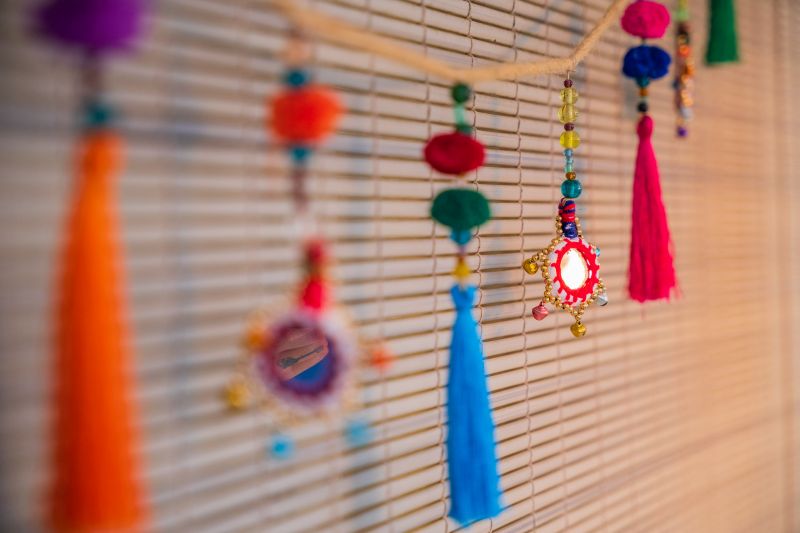
Sharpness
We’ll let the sample images speak for themselves here. Also, just for fun, we’ll compare the Sigma 24-70 against the Panasonic Lumix S-Pro 24-70mm f/2.8, which is a $2,200 lens compared to the $1,100 Sigma:



In fact, this lens is so sharp at f/2.8, that if you don’t focus perfectly on your subject you will clearly notice that the plane of focus is a little bit off. In the above scene, we had to re-focus on the two different subject zones in order to achieve maximum sharpness with such shallow DOF.
In the test crop below, we specifically focused at the extreme, extreme corner, just to see how sharp it is. In reality, there is a faint amount of field curvature, so unless you specifically set focus here, you might not see this same level of sharpness.
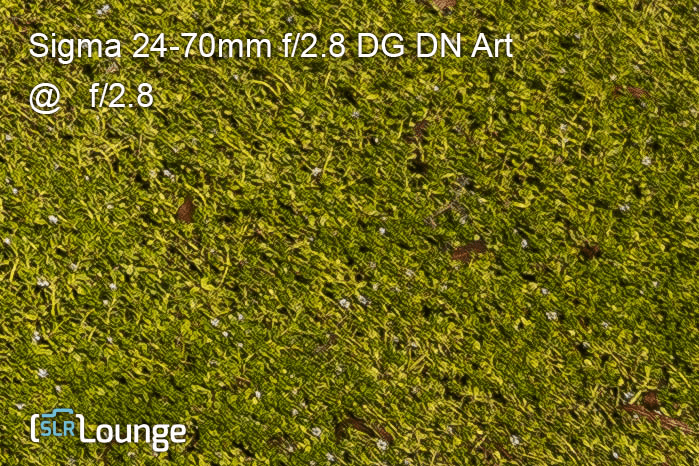



As you can see above, even when compared to the Panasonic 24-70mm that costs twice as much, (Yes, the Sigma would probably *destroy* the much older Sony GM lens) …sharpness is truly incredible, with only the slightest visible difference being at f/2.8 and in the extreme, extreme corners.
Likely thanks to the optical formula that is perfectly tailored to full-frame mirrorless cameras with their shorter flange distance, the Sigma 24-70mm f/2.8 DG DN Art is just that good, not just at 24mm, but it also doesn’t “slump” at any other focal length or aperture; it holds its own very well.
Bokeh
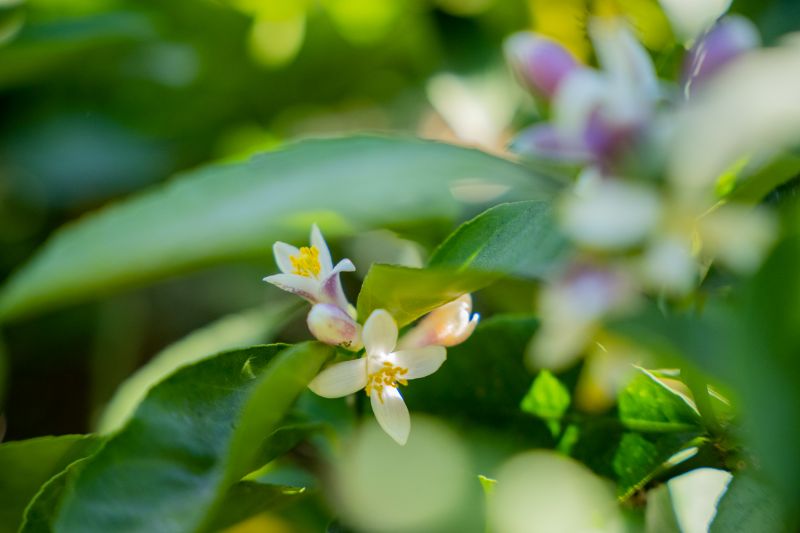
Bokeh is beautifully smooth, despite the “clinical” level of sharpness. In terms of both foreground and background blur, (see above) there is not much that can create a “busy” look in your out-of-focus backgrounds.

Achieving beautifully smooth bokeh isn’t as easy as you’d think, by the way, when you’re also trying to achieve such good optical integrity overall. So, it really is impressive that the lens is this sharp, and yet delivers aesthetically beautiful results, too.
Colors & Contrast

Colors, contrast, and the overall “pop” of images coming from this lens are all beautiful. If there is any color cast to this Sigma lens compared to others, it might be a faint, faint warm look, which is usually welcome for most photographers.
Vignetting & Distortion

Vignetting and distortion are two of the things that software can attempt to fix perfectly, however, it’s still good to have these issues at a minimal level before the profile is applied, otherwise, it can harm the sharpness of the image corners.
Thankfully, as far as modern mirrorless lenses are concerned, the Sigma 24-70 2.8 DN is actually one of the best we’ve seen; even when turning the in-camera profile corrections off, distortion and vignetting are minimal, and with them turned on there is virtually no sign of either.
(NOTE: see our con about extreme cases of vignetting correction, below.)
Sunstars & Flare


Even when shooting into really tough light, images stay surprisingly clear and crisp until the last minute, when the sun is getting close to entering the frame. And when it does, most of the flare is a beautiful warm wash of backlighting, without any “flare dots” that cause real problems, usually.
Sunstars are the typical Sigma Art style- not very “pointy” but still well-defined by f/11 or f/16.
(NOTE: want to see something cool? Look closely at the 70mm center star photo below. Yes, that’s right, this lens can make faint sunstars even wide-open at f/2.8, when shooting at 70mm!)
Color Fringing, Aberration, Coma & Astigmatism


We’ll let the above 100% crop star photos speak for themselves!
For the most discerning photographers who do things like photograph nightscapes or deep-sky astrophotography, the Sigma mirrorless 24-70 2.8 offers a lot: virtually zero color fringing or other aberrations, including minimal coma & astigmatism, at both 24mm and 70mm!
Macro & Close-Up Photography
One of the common flaws of 24-70mm lenses in the past was that they were very soft when focused extremely close up. I remember an old DSLR 24-70mm that required I stop down to f/5.6 or f/8 before images got sharp at the closest focus distance!


The close-up magnification is definitely not dedicated macro lens territory, however, it is impressive that the lens stays so perfectly sharp even when you get as close as you can to your subjects.
PRO: Design
Sigma is “going flagship” with its latest full-frame mirrorless lens designs, that’s for sure. Whether for the L-mount of the E-mount, there is a full complement of useful physical features, such as a click-able hood with a grippy surface to it, an AF/MF switch, a customizable L-Fn button, and a zoom lock switch.
(Stay tuned for our full review of the Sigma E-mount 85mm f/1.4 DG DN Art coming soon, too!)
Just about the only thing missing would be a focus distance indicator, something that no other mirrorless 24-70mm f/2.8’s have except the Nikon Z-mount 24-70mm f/2.8 S, with its controversial all-electronic display window, or of course, the L-mount Panasonic 24-70mm f/2.8, which actually has physical focus markings. (Although, honestly, we’re usually not a fan of the clutch mechanism for activating manual focus.)
Durability & Weather Sealing
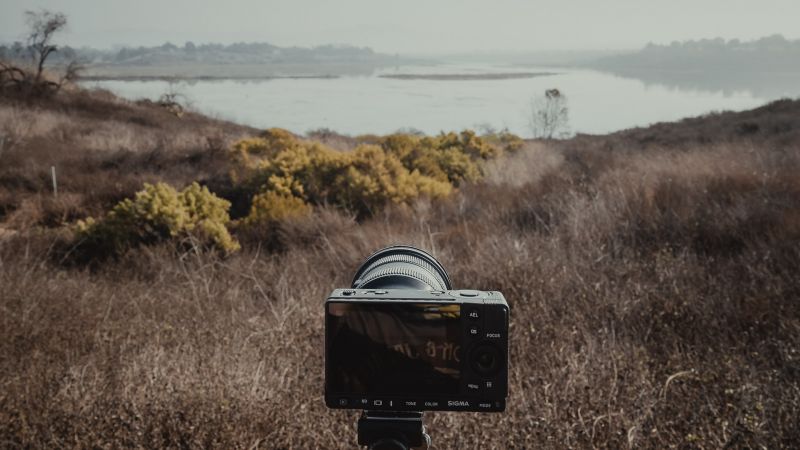
Sigma Art lenses have always been built “hefty”, but early on they weren’t necessarily “indestructible”. In other words, despite their solid feel when you first pick them up, they often were not weather sealed and could be prone to damage after a year or two of heavy use.
The mirrorless Sigma 24-70 2.8 is not only fully weather-sealed but also seems built rock-solid enough to withstand years of abuse.
Autofocus Performance
We were only able to test the speed & precision of this lens’ AF system on the Sigma and Panasonic camera bodies, but it was truly impressive! Fast, accurate, and silent. So, we’re left to assume that on a camera like a Sony A7R IV or A9 II, the autofocus is going to be just as good as, or better than, the “getting old” (almost) FE 24-70mm f/2.8 GM. Unlike DSLR lenses,
Manual Focus Performance
Manual focus is controlled electronically, as with essentially all native mirrorless lenses, aside from Panasonic, and is very smooth and precise.
Of course, as with all native Sony E-mount lenses, there is no focus distance scale on the lens, so you cannot manually set the lens to infinity or anything without the camera being on. Also, the camera may not perfectly remember its focus position when it is turned off or when it sleeps. But, again, these are mostly quirks of the camera system, not the lens itself.
Value
As we’ve mentioned before, this lens is as good as, or better than, other lenses costing twice as much. If you want a mid-range f/2.8 zoom, this is your best choice of any full-frame mirrorless system. (It’s a real shame that Sigma has not yet figured out Canon RF and Nikon Z mount protocols, but surely they’ll get around to it in the next year or two!)
A name-brand flagship lens might last a little longer if you heavily abuse your lenses year after year. Then again, with the build quality of the Sigma, we have every reason to believe it will prove to be just as durable, or more, in the long run.

Sigma 24-70mm f/2.8 DG DN Art Review | Cons
No Optical Stabilization
To be fair, most people will be happy to have a slightly smaller, more compact, and affordable lens, and just rely on IBIS, that is, in-body sensor-based stabilization. However, for those who are truly pushing the envelope in terms of low-light photography, it needs to be said: Optical stabilization still can do a slightly better job of stabilizing an image, sometimes, and better yet would be two stabilization systems that work simultaneously. So far, only Canon’s RF full-frame mirrorless system offers this, however.
In comparison, Sony’s own FE 24-70mm f/2.8 GM also lacks OSS. The Nikon Z 24-70mm f/2.8 also is un-stabilized, although Nikon’s in-body VR is allegedly a bit better than Sony’s. (We’re still testing this, across as many lenses as we can test; stay tuned!) Canon is the only full-frame mirrorless system that not only offers a stabilized 24-70mm f/2.8, but also combines that IS with its sensor-based stabilization, for truly impressive low-light hand-hold-ability.
If you’re still not yet heavily invested in a full-frame mirrorless system or are willing to switch, you might be interested in considering a Canon EOS R5 or EOS R6, and the RF 24-70mm f/2.8 L IS, if you know you are going to constantly be pushing the extreme, darkest types of shooting conditions. Otherwise, just get this Sigma 24-70mm f/2.8 for your Sony, Sigma, or Panasonic/Leica camera!
Portability Versus Sony, Tamron & Others

While this mirrorless Sigma 24-70mm f/2.8 is a decent amount lighter than the DSLR Sigma 24-70mm f/2.8 DG HSM, (the Sigma mirrorless 24-70 is 185g lighter) …it’s not that much lighter than the Sony FE 24-70mm f/2.8 GM. (It’s just 51g lighter.)
By comparison, the Tamron 28-75mm f/2.8, thanks to its plastic-and-metal construction and overall minimalistic design, (not to mention the less-wide zoom range) is a whopping 285g lighter. That’s 10 ounces; more than half a pound. There’s also the difference in filter sizes; the Sigma (and Sony, and all other modern 24-70mm f/2.8’s) use 82mm filters, whereas the Tamron is a svelte 67mm.
The bottom line is, if you want an extremely portable lens, the Sigma isn’t going to live up to the expectations that some people may still have about mirrorless cameras. Having said that, this is still the lightest 24-70mm f/2.8 on the market, if you absolutely need 24mm, not 28mm.
Quirky Built-In Lens Vignetting & Distortion Correction Profile(s)
I am going to just keep mentioning this in probably every single mirrorless lens review until SOMEBODY listens, and does a better job of this:
If you heavily edit images of a very smooth surface, such as an empty blue sky or an overcast grey one, then you’ll see weird artifacts revealed by the vignetting correction profile. Usually, simply put, the built-in profile never does a truly perfect job of correcting vignetting. Then, when you try to make up for any discrepancy manually with the sliders in Lightroom, you can never get it quite perfect.
In the sample below, look closely in the upper left and right corners, and note the unevenness in tone. (NOTE: The image is heavily edited; with nearly +100 Dehaze and Clarity applied.)

Distortion correction can also mess up image quality in weird ways, too. Again, it’s almost impossible to see, unless you’re heavily editing your photos.
In both cases, the visibility of these issues is minimal for the Sigma 24-70mm f/2.8, and you’re unlikely to ever run into this problem unless you’re the type of person whose creative style involves cranking the “Dehaze” slider towards +100, or you do advanced layer stacking for astrophotos in Photoshop.
Sigma 24-70mm f/2.8 DG DN Art Review | Compared To The Competition

We’ve already talked about the competition quite a bit. In terms of value, the Sigma is half the price of its closest competitors, the Sony FE 24-70mm f/2.8 GM, and the Panasonic Lumix S Pro 24-70mm f/2.8. And yet, it’s just as good, in pretty much every way, from physical build quality to actual image quality.
If you’re willing to give up some of the wide end, in favor of saving a little money and a decent bit of weight, then the Tamron 28-75mm f/2.8 Di III RXD is the only other truly native Sony E-mount option, and isn’t even available for those of you with Sigma/Panasonic/Leica bodies. (At least, not yet, at the time of this review’s publication.)
If you have one of the latest DSLR 24-70mm f/2.8’s, then you might get just as good image quality and rock-solid build quality, however, you’ll have to fiddle with an adapter, and put up with a significantly more front-heavy kit and the slight autofocus shortcomings that may come with using an adapter.
Sigma 24-70mm f/2.8 DG DN Art Review | Conclusion

All in all, if you want a 24-70mm f/2.8 for your mirrorless camera, then save up the just over $1K for this Sigma. Even if you have an existing DSLR 24-70 2.8, you’re better off selling it for nearly $1K, or whatever its worth, and then pitching in to get this Sigma.
What else can we say except, again, we can’t wait for Sigma to make this lens for Canon RF and Nikon Z mounts! The price is just too attractive, the performance is just too good. In the meantime, we could use the TechArt adapter for Sony E-mount to Nikon Z-mount, however, autofocus isn’t nearly as reliable, in our long-term testing, and of course, that’s just not an option for Canon mirrorless shooters.
So, there you have it. This is our top recommendation to all photographers who use one of the two full-frame mirrorless mounts this lens is available for, and in fact, it’s even a reason to consider joining, of switching to, one of these mounts!
Check Pricing & Availability
The Sigma 24-70mm f/2.8 is available for Sony E-mount and the Leica (Panasonic and Sigma) L-mount; both options will set you back just $1,099 on B&H.
9.5 Score
Pros
- Nearly flawless image quality
- Rugged build quality & weather sealing
- Silent, reliable autofocus
- Flagship features
- Incredible value
Cons
- Missing optical stabilization
- Not as lightweight as the Tamron 28-75mm f/2.8
- Vignetting correction profile not perfect under heavy editing
Final Verdict
This 24-70mm f/2.8 is one of the best we've ever reviewed, and it costs half as much as its flagship name-brand competitors. Need we say more?
Matthew Saville
Follow his wilderness nightscape adventures on Instagram: instagram.com/astrolandscapes




Get Connected!